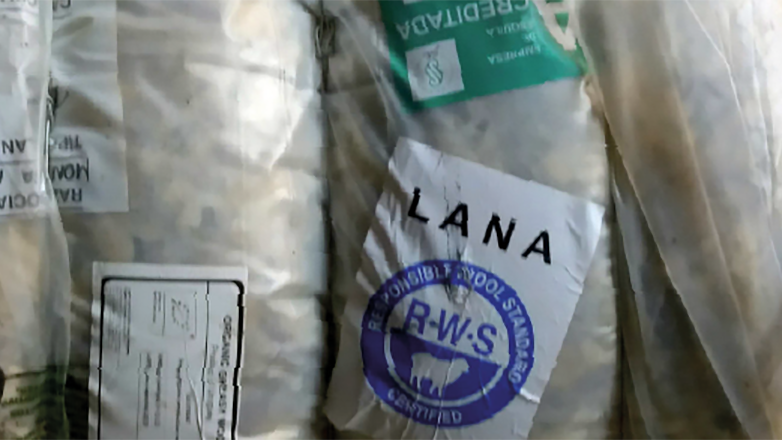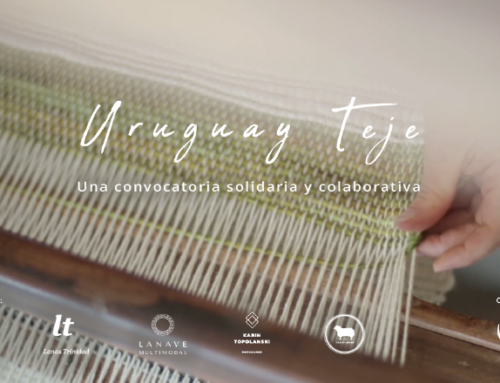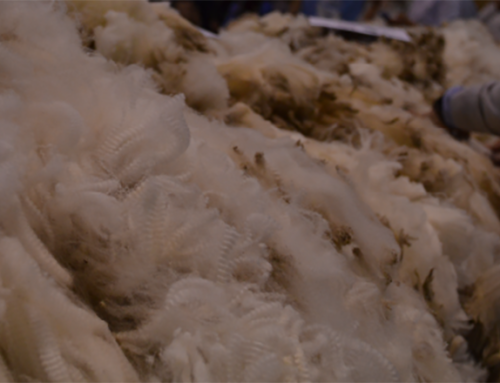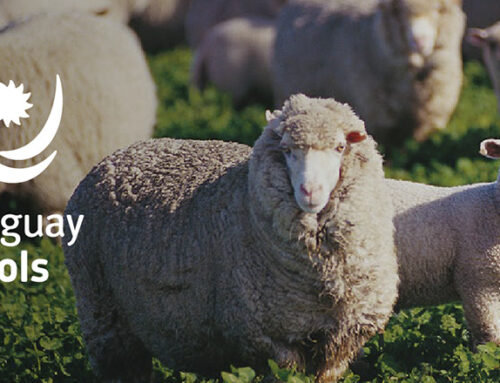Different aspects of wool certification have been a central topic in wool production and trade, including discussions at recent IWTO meetings, at the Wool Connect conference, and at the last Merino congress in Uruguay.
Currently, media reports from the wool market commonly assert that “several lots of fine wool were sold at outstanding prices, but it is worth mentioning that they were certified”. This article aims to detail the different options available to wool producers in Uruguay.
Increasingly, consumers want to know more about the product they buy and the conditions under which it was produced. Certification serves to demonstrate that a product has been produced in a certain way or has certain characteristics (shearing process, adequate animal welfare, care of the production environment, etc.).
The basic aspects of a certification process are: understanding and implementation of a certain protocol, self-certification or certification by a third party (recognised body), and identification with a label or mark on the product that complies with certification stipulations. Essentially, certification allows for the differentiation of a certain lot from others and is useful for promotional purposes. It can also be a requirement for access to certain markets and should allow producers to obtain a better selling price.
What Certification Can a Producer Achieve in Uruguay?
There are several certifications currently available, the main characteristics of which are detailed below.
Conditioned Wool Seals
A local certificate that indicates compliance with the wool conditioning standards agreed upon by the SUL and wool operators. These standards are a series of requirements for shearing processes that aim to produce wool free of contaminants (elimination of coloured fibres, no polyethylene, paints, etc.), separate the different types of wool produced (fleece and by-products), and correctly detail the different bundles obtained through the shearing process.
Those shearing companies certified by the SUL that have demonstrated knowledge of the work required, have trained shearers and table staff, and are responsible for the quality of the work, receive Green Seal certification. They sign an annual contract for the use of the Green Seal. Most of these companies are also certified to conduct lot sampling and thus objectively determine the main characteristics of selected wool (average diameter and washing yield, for example) prior to its sale. The recently implemented Yellow Seal also indicates compliance with conditioning standards. It is used by shearing companies in the process of certification or by producers who shear their own lot after receiving training. In both cases, participants must sign a use contract with the SUL, that includes rights and obligations. It is worth noting that the Light Blue Seal was discontinued during the 2020 harvest, although several lots of wool currently awaiting sale in sheds still have this certification from previous harvests.
RWS (Responsible Wool Standard)
The Responsible Wool Standard is an international standard, developed by a conglomerate called Textile Exchange. These companies work with different synthetic and natural fibres (including wool) and have developed protocols for goose feathers (RDS) and mohair (RMS).
The standard establishes production criteria to be met by certified establishments. Although it primarily covers aspects of animal welfare (the five freedoms of sheep are respected, Mulesing is not allowed, a health plan must be in place and only certain management practices are permitted, etc.), it also addresses care for the production environment (soil and pastures), biodiversity, and social welfare (working conditions for workers, no child labour, etc.).
This alternative is externally certified (must be authorized as a certifying body) and several local wool exporting companies are already certified. Just as Uruguay produces several lots of wool with RWS certification, producers in Argentina, South Africa, Australia, and other countries have also sought RWS certification.
Organic Wools (GOTS – Global Organic Textile Standard)
These relate mainly to lots of wool from mixed farms that have an organic certification for beef production programmes for slaughterhouses. This certification is issued by an authorised external body and covers different aspects related to the fodder base, the use of phosphorite as fertiliser, and records of authorised health treatments, among others.
It requires a written record of practices implemented to comply with the stipulated protocol regarding environmental and social aspects of production.
Chain Certification
From local wool harvesting to the moment a wool garment is purchased, the extensive production process involves several stages — such as washing, combing, spinning, weaving, design, etc. — and generally occurs across different countries. This is why the identity of certified wool must be maintained throughout the entire textile production chain through a traceability procedure known as the “chain of custody”.
Other Certifications
Several lots have the “Nativa precious fibre” certification from Chargeurs Luxury Materials (Lanas Trinidad), covering aspects of animal welfare, environmental care, and corporate social responsibility, with the use of Blockchain technology for traceability from sheep to garment.
More recently, “Origen” from local producer Engraw was publicly unveiled, covering aspects of wool harvesting (Green Seal lots), environmental care (renewable energy and zero carbon emissions), animal welfare (based on the Guide for Ethical Sheep Production in Uruguay), and traceability to the farms.
Main Considerations
- Certifications of wool flocks are voluntary.
- They are additional to the intrinsic properties of the wool (average diameter, wash yield, percentage of Grade A fleece in the lot, for example).
- There are several certifications that indicate compliance with different protocols.
- Different customers abroad may demand different certifications.
- A batch of wool may have more than one certification.
- Before pursuing a specific certification, producers should know what is involved at the farm level, consider the costs, and assess the current or future benefits of obtaining the certification (access to certain markets, better selling prices).
Source: SUL
Ignacio Abella, MSc Agronomy – iabella@sul.org.uy
Research and Development Department





